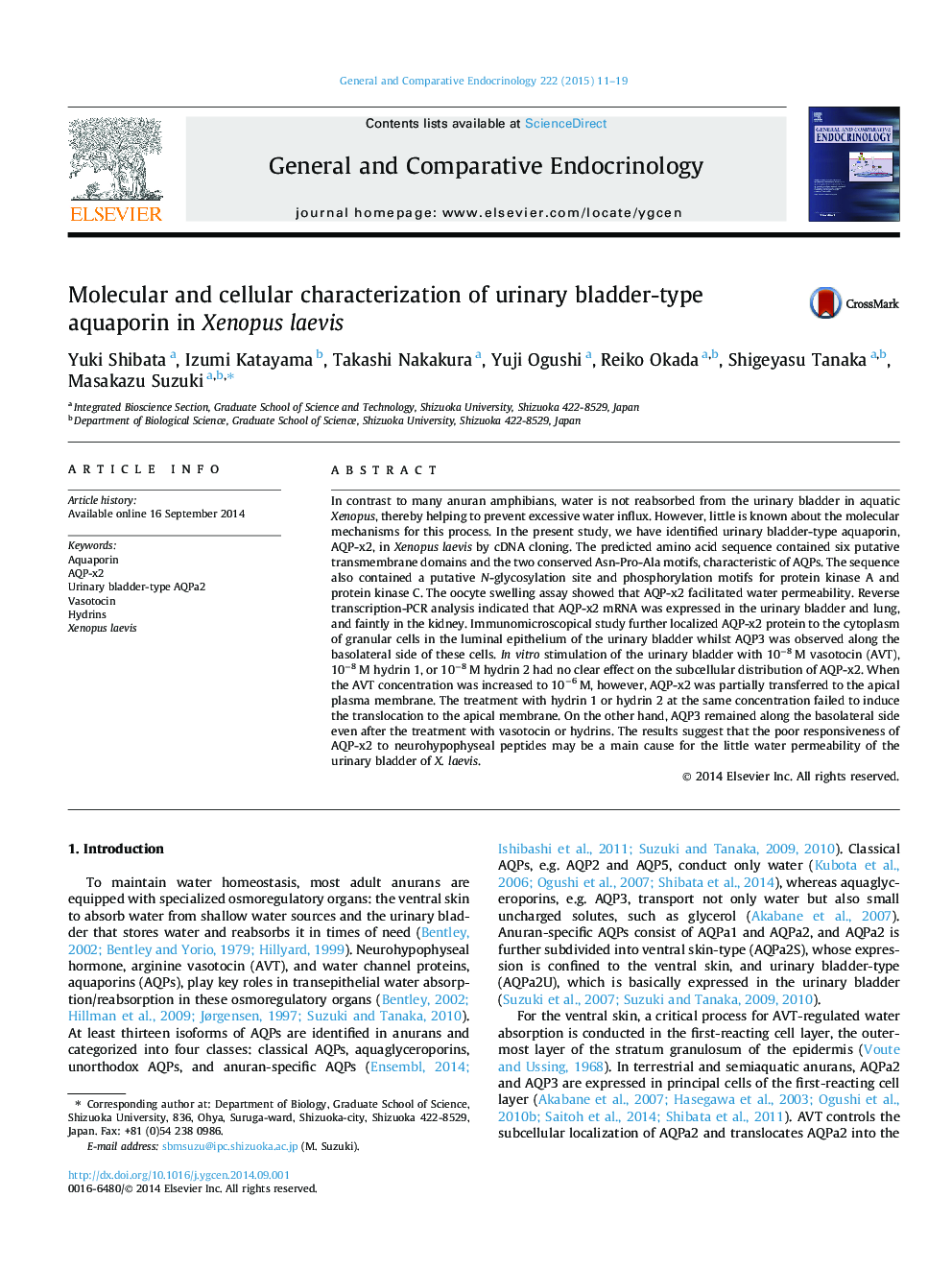| کد مقاله | کد نشریه | سال انتشار | مقاله انگلیسی | نسخه تمام متن |
|---|---|---|---|---|
| 5900909 | 1568884 | 2015 | 9 صفحه PDF | دانلود رایگان |

- We first identified urinary bladder-type AQPa2, AQP-x2, in the aquatic anurans.
- AQP-x2 was localized to the cytoplasm of granular cells in the urinary bladder.
- 10â8Â M AVT and 10â6Â M hydrins failed to translocate AQP-x2 to the apical membrane.
- 10â6Â M AVT partially induced translocation of AQP-x2 to the apical membrane.
- This poor response of AQP-x2 is important for water homeostasis in aquatic anurans.
In contrast to many anuran amphibians, water is not reabsorbed from the urinary bladder in aquatic Xenopus, thereby helping to prevent excessive water influx. However, little is known about the molecular mechanisms for this process. In the present study, we have identified urinary bladder-type aquaporin, AQP-x2, in Xenopus laevis by cDNA cloning. The predicted amino acid sequence contained six putative transmembrane domains and the two conserved Asn-Pro-Ala motifs, characteristic of AQPs. The sequence also contained a putative N-glycosylation site and phosphorylation motifs for protein kinase A and protein kinase C. The oocyte swelling assay showed that AQP-x2 facilitated water permeability. Reverse transcription-PCR analysis indicated that AQP-x2 mRNA was expressed in the urinary bladder and lung, and faintly in the kidney. Immunomicroscopical study further localized AQP-x2 protein to the cytoplasm of granular cells in the luminal epithelium of the urinary bladder whilst AQP3 was observed along the basolateral side of these cells. In vitro stimulation of the urinary bladder with 10â8Â M vasotocin (AVT), 10â8Â M hydrin 1, or 10â8Â M hydrin 2 had no clear effect on the subcellular distribution of AQP-x2. When the AVT concentration was increased to 10â6Â M, however, AQP-x2 was partially transferred to the apical plasma membrane. The treatment with hydrin 1 or hydrin 2 at the same concentration failed to induce the translocation to the apical membrane. On the other hand, AQP3 remained along the basolateral side even after the treatment with vasotocin or hydrins. The results suggest that the poor responsiveness of AQP-x2 to neurohypophyseal peptides may be a main cause for the little water permeability of the urinary bladder of X. laevis.
Journal: General and Comparative Endocrinology - Volume 222, 1 October 2015, Pages 11-19